Isabela Island, located in the Galapagos archipelago, is home to a diverse range of unique flora and fauna. One of the most fascinating animal groups found on the island are the birds.
With over 60 species of birds, ranging from tiny finches to large albatrosses, Isabela Island is a bird watchers’ paradise. These avian species have adapted to the volcanic topography of the island, developing unique physical and behavioral characteristics.
In this article, we will explore the various bird species found on Isabela Island, their habitats, and the threats they face in this fragile ecosystem.
1. Flightless Cormorant
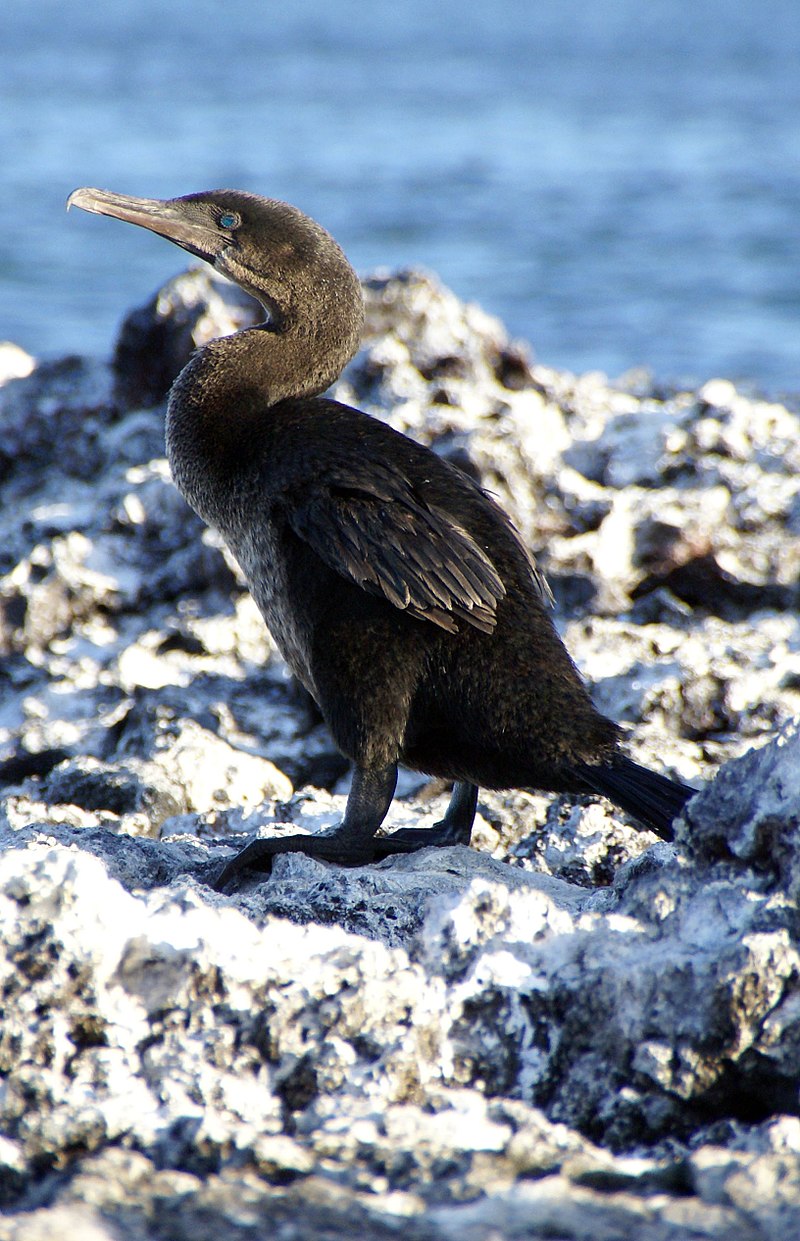
The Flightless Cormorant is a unique species of bird found exclusively on the Galapagos Islands.
It’s one of the most remarkable animals there, as it’s the only known cormorant that has lost its ability to fly due to evolutionary pressures in this isolated environment.
The Flightless Cormorant has an impressive wingspan and strong webbed feet for swimming, but these adaptations are not enough for flight.
Its diet consists mainly of fish caught from coastal waters near its nesting sites, which it dives into with great skill and agility despite being unable to take off from land or water.
This majestic creature stands out among other birds on the islands and can be distinguished by its black feathers, white throat patches, yellow facial skin around their eyes, and bright blue gular pouch under their chin used during courtship displays.Scientific classification:
| Kingdom | Animalia |
| Phylum | Chordata |
| Class | Aves |
| Order | Suliformes |
| Family | Phalacrocoracidae |
| Genus | Nannopterum |
| Species | N. harrisi |
Also Featured In: Birds of Ecuador, Galapagos Birds You Should Know
2. Galapagos Penguin
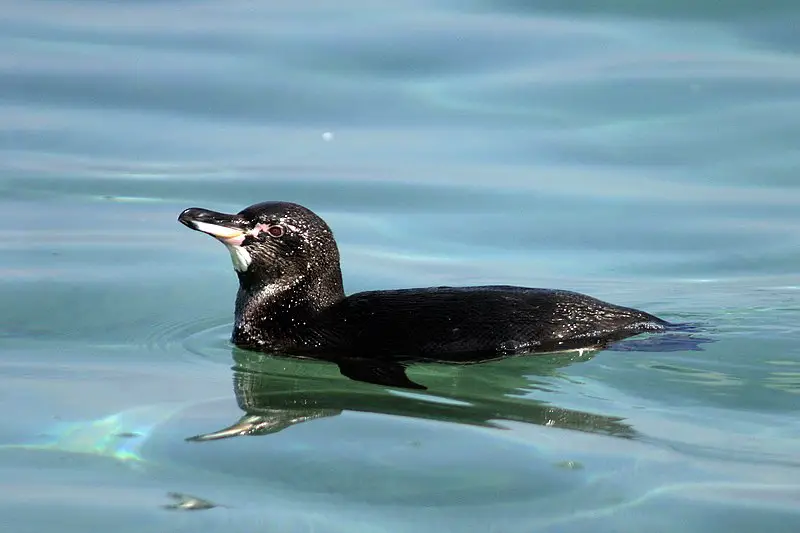
The Galápagos penguin is a unique species of bird found only in the waters around Ecuador’s Galapagos Islands.
It is the northernmost-dwelling penguin, adapted to survive thanks to cool currents from the Humboldt and Cromwell Currents.
This small yet hardy bird has black feathers on its back, with white stripes running down each side of its body and along its face. Its beak is usually yellow or orange and it stands about 27 cm tall when fully grown.
Although they are mostly solitary animals, these penguins form large colonies during breeding season which can number up to 500 individuals at any one time.
The noise of their calls echoes across the islands creating an unforgettable chorus for visitors lucky enough to witness this amazing sight first hand.Scientific classification:
| Kingdom | Animalia |
| Phylum | Chordata |
| Class | Aves |
| Order | Sphenisciformes |
| Family | Spheniscidae |
| Genus | Spheniscus |
| Species | S. mendiculus |
Also Featured In: Birds of Galápagos Islands You Need to Know,
3. Paint-Billed Crake
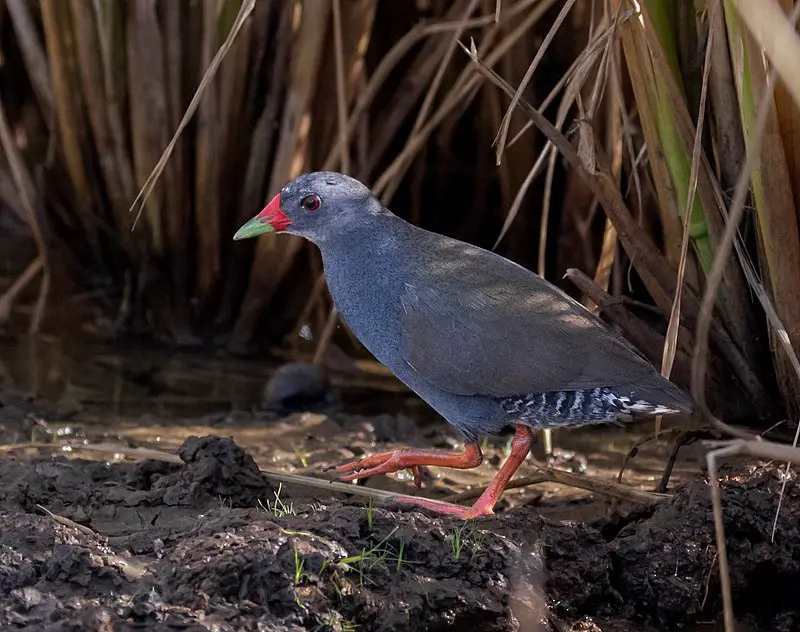
The Paint-billed Crake is a species of bird found in Central and South America, as well as the Galápagos Islands.
This member of the Rallidae family is characterized by its bright red bill and grayish brown plumage with white spots on each individual feather.
It prefers to stay hidden amongst dense vegetation near fresh water sources such as marshes or swamps, where it feeds mainly on insects and other small invertebrates like snails or molluscs.
Despite being relatively widespread across its range, this species remains elusive due to its secluded nature; making sightings quite rare for human observers.
The genus Neocrex was created specifically to house this remarkable bird.Scientific classification:
| Kingdom | Animalia |
| Phylum | Chordata |
| Class | Aves |
| Order | Gruiformes |
| Family | Rallidae |
| Genus | Neocrex |
| Species | N. erythrops |
Also Featured In: Trinidad and Tobago birds, Birds That Live In Tristan da Cunha
4. Mangrove Finch
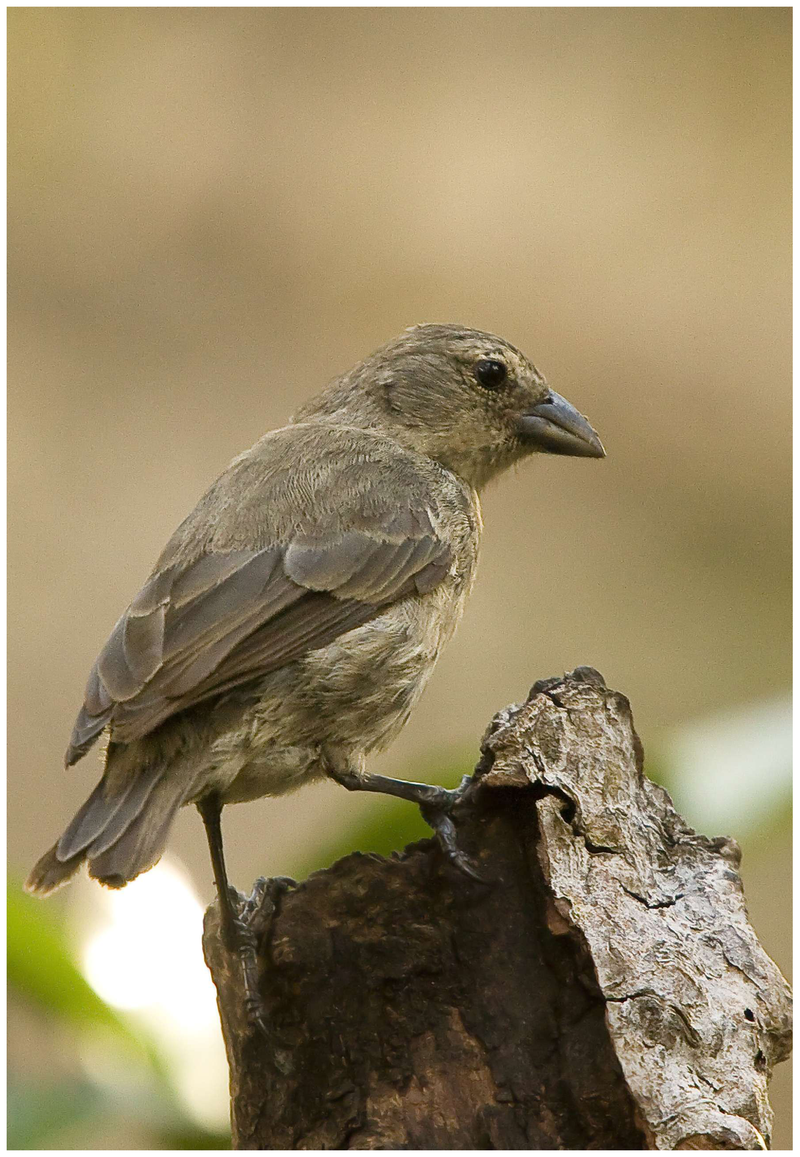
The Mangrove Finch is a species of bird belonging to the Darwin’s finch group from the Thraupidae family, which are endemic in Galápagos Islands.
It was formerly found on Fernandina and Isabela, but recent surveys have failed to detect them on Fernandina.
Unfortunately it has been classified as critically endangered with only an estimated population of 2 due its decreasing habitat caused by human activities such as deforestation for agricultural purposes and grazing livestock.
The destruction of their natural habitats also increases vulnerability towards introduced predators like rats or cats that can hunt these birds easily since they don’t have experience dealing with them yet.
Conservation efforts need to be done soon if we want this unique species survive.Scientific classification:
| Kingdom | Animalia |
| Phylum | Chordata |
| Class | Aves |
| Order | Passeriformes |
| Family | Thraupidae |
| Genus | Camarhynchus |
| Species | C. heliobates |
Also Featured In: Finches Species,
5. Lava Heron
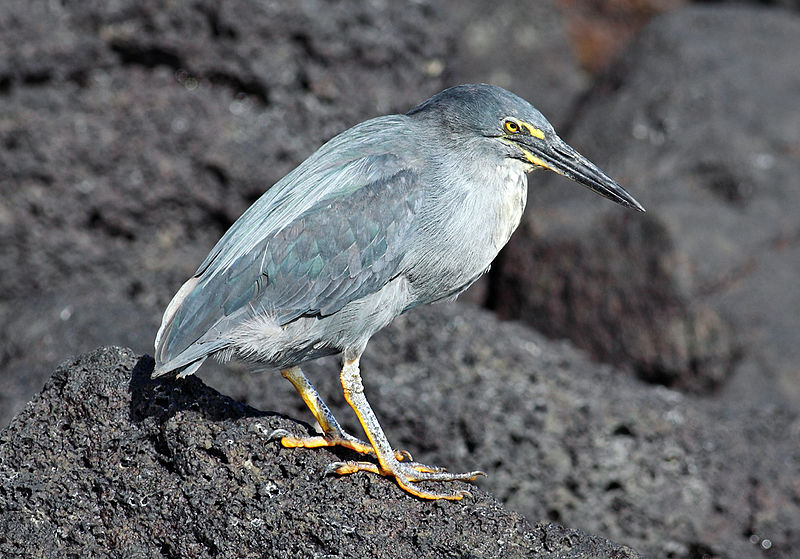
The Lava Heron is a species of heron that is endemic to the Gal�pagos Islands of Ecuador. It has distinctive black and white stripes along its body, giving it the appearance of being striped like lava rock.
Its back feathers are generally brown-grey in color with shades ranging from dark grey to light blue depending on age and season.
This small heron stands an average height between 20�25 cm (7.9�9.8 inches) tall and weighs around 53 g (1.87 oz).
The diet consists mainly of insects, crustaceans, fish as well as other aquatic animals found near rivers or wetlands where they usually inhabit coastal lagoons or mangroves trees for nesting sites during breeding season which occurs annually at different times on each island group within the archipelago region throughout most months out year round excluding winter when rainfall increases significantly.Scientific classification:
| Kingdom | Animalia |
| Phylum | Chordata |
| Class | Aves |
| Order | Pelecaniformes |
| Family | Ardeidae |
| Genus | Butorides |
| Species | B. sundevalli |
Also Featured In: Herons Species,
6. Galapagos Hawk
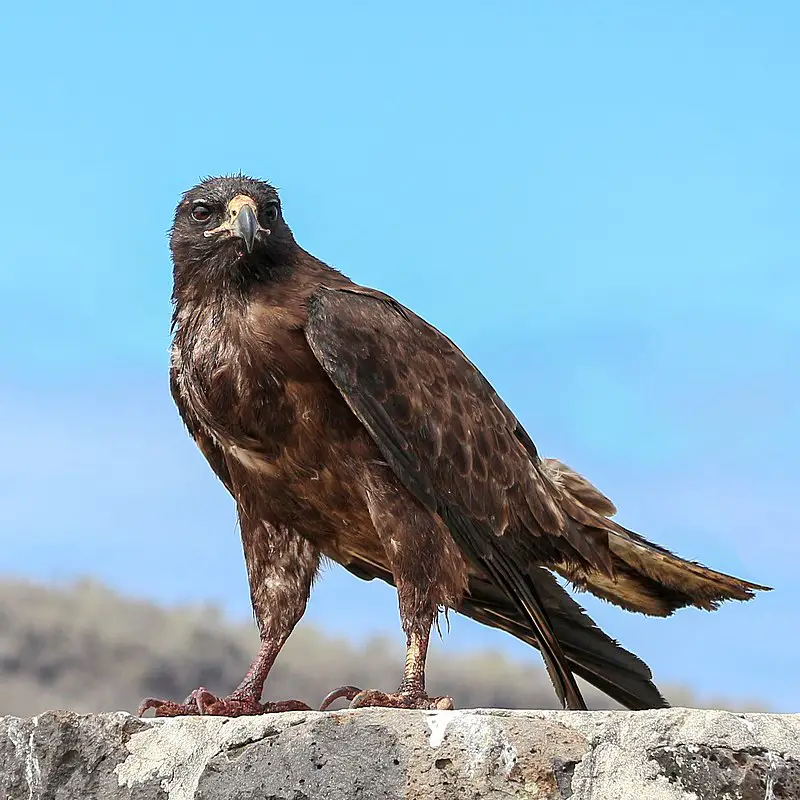
The Galápagos hawk is a native bird species found across the Galápagos Islands. It is similar in size to the red-tailed hawk and Swainson’s hawk of North America, although its size varies across the different islands.
These hawks are known for their heavy build, which makes them stand out from other bird species in the region.
They are also known for their unique adaptations and behaviors that have allowed them to thrive in their specific island habitats.
As a result, the Galápagos hawk has become an iconic part of the Galápagos ecosystem, and is often studied and admired by tourists and researchers who visit the islands.Scientific classification:
| Kingdom | Animalia |
| Phylum | Chordata |
| Class | Aves |
| Order | Accipitriformes |
| Family | Accipitridae |
| Genus | Buteo |
| Species | B. galapagoensis |
Also Featured In: Common Carnivore Birds,